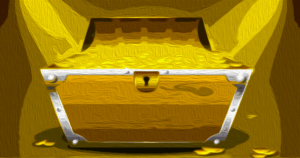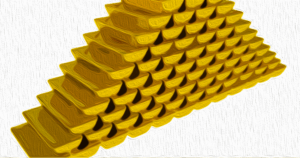The Spanish Silver Dollar: A Trade Currency Without a Strong Home Country
Bitcoin is often compared to gold as a store of value due to its limited supply. However, this comparison falls short as gold currencies, like the British sovereign, were heavily promoted by the British empire. Bitcoin, lacking a nation state to promote its adoption, finds a more fitting comparison in the Spanish silver dollar.
The Success Factors of the Spanish Silver Dollar
The Spanish silver dollar, also known as the reale, thrived as a trade currency despite the decline of Spain, its nation of origin. It even gained acceptance in countries that were never Spanish colonies. The success of the reale can be attributed to three main factors: availability, quality, and verifiability.
The Creation and Divisibility of the Reale
In 1497, King Ferdinand and Queen Isabella reformed Spain's monetary system, introducing the new silver reale. This coin could be divided into eight parts, known as 'pieces of eight.' It's important to note that the reale should not be confused with 'doubloons,' which were made from gold.
The Discovery of the Cerro de Potosi and Increased Demand for Silver
In 1545, the Spanish discovered the Cerro de Potosi in present-day Bolivia, the richest source of silver in history. A shortage of coins led to the Spanish crown allowing the minting of reales in New Spain. Additionally, Portuguese explorers found new trade routes to the Indies and China, where merchants preferred silver over gold. Chinese demand for silver grew significantly, creating a market for regular shipments of reales from New Spain to the Philippines.
The Spread of Adoption Across the Americas and Asia
The adoption of the reale spread throughout the Americas, becoming the de facto currency of the newly independent United States by 1792. The US dollar was initially pegged to the reale. China also pegged its new yuan to the reale in 1879. The growth of the Spanish Empire enabled the distribution and availability of the reale in both America and Asia.
The Consistency of the Reale's Quality
The Spanish government ensured the consistent quality of the reale, maintaining its value and stability. Unlike other currencies of the time, the reale experienced limited debasement. However, the strength of the reale did not prevent the weakening of the Spanish economy. Efforts to combat inflation, including debasing domestic coinage, led to the exportation of silver reales to Europe.
The Verifiability of the Reale
Foreign attempts to replicate the reale were unsuccessful, as Chinese and Asian traders rejected coins of similar quality and weight. The Spanish reales were trusted due to their consistency. Other European nations, such as the Dutch and the British, required silver to trade with China and Asia. The use of reales made trade easier, as they were readily accepted.
Lessons for Bitcoin: Availability, Quality, and Verifiability
Bitcoin, like the Spanish silver dollar, has the potential to be a trade currency. It is abundantly available on the open internet and has a consistent design and structure. The underlying mathematics of Bitcoin are the same worldwide. Additionally, Bitcoin's verifiability is ensured through a public ledger with an immutable structure. Just as the reale gained recognition and status over time, Bitcoin may follow a similar path. While there may be criticisms of Bitcoin's suitability as a means of exchange, it shares key features of success with the reale: availability, quality, and verifiability.
A Remarkable Achievement Without a Home Nation
The Spanish silver dollar's success as a trade currency while Spain declined was remarkable. Even more remarkable is Bitcoin's achievement in gaining adoption without the support of a home nation. As Bitcoin continues to grow, it may revolutionize the concept of a trade currency in a globalized world.
Frequently Asked Questions
What are the pros & con's of a golden IRA?
A gold IRA is an excellent investment vehicle for those who want to diversify their holdings but don't have access to traditional banking services. It allows you to invest in precious metals such as gold, silver, and platinum without paying taxes on any gains until they're withdrawn from the account.
However, early withdrawals of funds will incur ordinary income tax. But because these funds are held outside of the country, there is little chance of them being seized by creditors when you default on your loan.
So if you like owning gold without worrying about taxes, a gold IRA may be right for you.
What is a Precious Metal IRA, and how can you get one?
Precious metals make a great investment in retirement accounts. Precious metals have been around since Biblical times and still hold their value today. Investing in precious metals such as gold, silver, and platinum is also a great way to diversify your portfolio and protect against inflation.
Certain countries even allow their citizens to save money in foreign currencies. You can buy gold bars in Canada, and then keep them at the home. You can then sell the same gold bars to Canadian dollars when you return home to visit your family.
This is a very easy way to invest in precious metals. It's particularly helpful for people who don't reside in North America.
Which is stronger, 14k or sterling gold?
Gold and silver are strong metals, but sterling silver is much less expensive because it contains 92% pure silver rather than just 24%.
Sterling silver is also known as fine silver because it is made from a mixture of silver and other metals such as copper and zinc.
Gold is considered very strong. It is very difficult to separate it from its metal counterpart. If you dropped an object onto a piece or gold, it would break into thousands instead of two halves.
However, silver isn't as strong and durable as gold. If you dropped an item onto silver sheets, it would likely fold and bend without cracking.
It is commonly used in coins and jewelry. Its value fluctuates based on demand and supply.
Which type of IRA works best?
It is crucial to find the right IRA for your needs. Consider whether you are looking to maximize tax-deferred growth, minimize taxes and pay penalties later, avoid taxes, or both.
The Roth option may make sense if you are saving for retirement but don't have much other money invested. It's also worth considering if your plan is to work after the age of 59 1/2.
Traditional IRAs might be more beneficial if you are looking to retire early. You'll likely owe income taxes. The Roth IRA is a better option if you plan to continue working well beyond age 65. It allows you to withdraw any or all of your earnings and not pay taxes.
Statistics
- The IRS also allows American Eagle coins, even though they do not meet gold's 99.5% purity standard. (forbes.com)
- If you accidentally make an improper transaction, the IRS will disallow it and count it as a withdrawal so that you would owe income tax on the item's value and, if you are younger than 59 ½, an additional 10% early withdrawal penalty. (forbes.com)
- Depending on your financial situation, most experts recommend you invest no more than 5% to 10% of your retirement funds in precious metals. (forbes.com)
- To qualify as IRA allowable precious metals and be accepted by STRATA, the following minimum fineness requirements must be met: Gold must be 99.5% pure, silver must be 99.9% pure, and platinum and palladium must both be 99.95% pure. (stratatrust.com)
External Links
regalassets.com
forbes.com
investopedia.com
wsj.com
How To
How to change your IRA to a gold IRA
Are you interested in moving your retirement savings to a more gold-colored IRA instead of a traditional IRA? This article will assist you in that endeavor. Here's how you can do it.
“Rolling Over” refers to the process of transferring money between two types of IRAs (traditional and gold). Rolling over an IRA account can provide tax advantages. Others prefer to invest in tangible assets, such as precious metals.
There are two types IRAs – Traditional IRAs, and Roth IRAs. The difference between the two accounts is simple. Roth IRAs have no tax deductions, but Traditional IRAs can deduct taxes. This means that if you have $5,000 invested in a Traditional IRA, you will only be able take out $4850 after five years. If you invested the same amount in a Roth IRA, however, you'd be able to keep every penny.
These are some things to consider if you plan to convert from a Traditional IRA to a Gold IRA.
First, you need to decide whether to roll over your current balance into a new account or simply transfer funds from your old account to your new one. When transferring money, you'll pay income tax at your regular rate on any earnings that exceed $10,000. If you decide to roll over your IRA you will not be subject to income tax on these earnings until you turn 59 1/2.
Once you have made up your mind, it is time to open a brand new account. You'll likely be required to provide proof of identities, such as a Social Security card, passport, and birth certificate. You will then need to fill out paperwork proving that you have an IRA. Once you have completed all the forms, you will submit them to bank. They will verify your identity as well as give instructions on how to send wire transfers and checks.
Now comes fun. Now, deposit money into your account and wait for approval from the IRS. You will be notified by mail that your request has been approved.
That's it! Now all you have to do is sit back and watch the money grow. You can also close your IRA and transfer the balance to a new one if you change your mind.
—————————————————————————————————————————————————————————————-
By: Nick Philpott
Title: The Success of the Spanish Silver Dollar: Lessons for Bitcoin
Sourced From: bitcoinmagazine.com/culture/bitcoin-as-a-21st-century-piece-of-eight
Published Date: Thu, 04 Jan 2024 15:00:00 GMT












